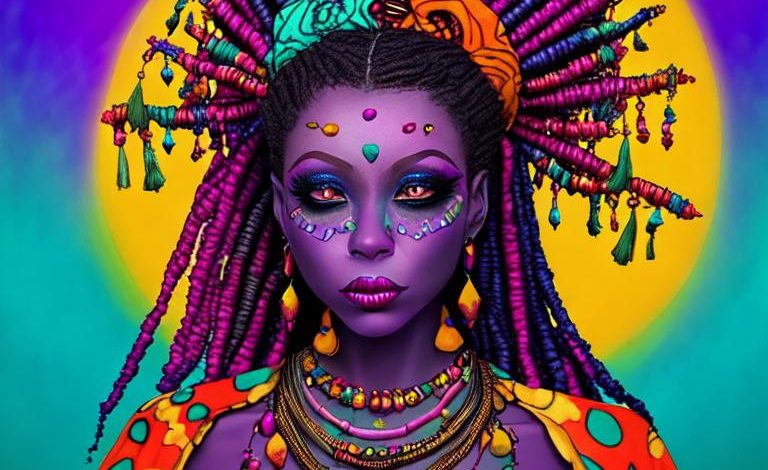
As a witch, I have always been fascinated by the practice of hoodoo. Hoodoo, also known as conjure or rootwork, is an African American folk magic tradition that has its roots in the southern United States. It is a unique blend of African, Native American, and European traditions, and it has been practiced by African Americans for centuries.
One of the most intriguing aspects of hoodoo is its use of herbs and roots in spells and rituals. Each herb and root has its own specific properties and can be used to achieve a specific goal. For example, basil is often used in love spells, while mandrake root is used for protection.
Another important component of hoodoo is the use of candles. Different colored candles are used for different purposes. For example, red candles are used for love spells, while green candles are used for money spells. The candle is dressed with oils and herbs to amplify its power and then lit to activate the spell.
In addition to herbs and candles, hoodoo also incorporates the use of amulets and talismans. These are objects that are believed to have magical properties and can be carried or worn to bring good luck, protection, or other benefits. Some common amulets and talismans in hoodoo include mojo bags, which are small bags filled with herbs and other objects, and lucky coins.
One of the most famous aspects of hoodoo is its association with voodoo dolls. Voodoo dolls are often portrayed in popular culture as objects used to harm or curse someone, but in reality, they can also be used for positive purposes. For example, a voodoo doll can be used to heal a specific part of the body or to bring good luck to a person.
Hoodoo also places a great deal of importance on the power of words. Spells and incantations are often spoken or chanted to activate the magic. These words are believed to have the power to influence the world around us and bring about desired outcomes.
The practice of hoodoo has always been closely tied to the African American experience. During the era of slavery, slaves were not allowed to practice their native religions and were often forced to adopt Christianity. Hoodoo allowed them to continue practicing their spiritual beliefs in secret, using Christian symbolism to disguise their rituals.
Today, hoodoo is still practiced by many African Americans, as well as people of all races and backgrounds who are drawn to its unique blend of traditions. It is often practiced alongside other spiritual traditions, such as Wicca or traditional African religions.
One of the key principles of hoodoo is the idea of personal responsibility. Hoodoo practitioners believe that we have the power to shape our own destinies and that our actions have consequences. By taking responsibility for our actions and using magic to help manifest our desires, we can create a better life for ourselves and those around us.
Hoodoo also emphasizes the importance of building relationships with spirits and ancestors. Many hoodoo practitioners believe that our ancestors are still with us and can offer guidance and protection. They may also work with spirits such as the ancestors of the land or the spirits of the plants and animals.
One of the most important aspects of hoodoo is the idea of reciprocity. Hoodoo practitioners believe that magic is not a one-way street, but rather a give-and-take relationship. When we ask for something through magic, we must be willing to offer something in return. This could be anything from an offering to the spirits to a promise to do something positive in the world.
Hoodoo also places a great deal of importance on the concept of balance. Hoodoo practitioners believe that everything in the universe is connected and that everything has its opposite. This means that when we use magic to bring something into our lives, we must also be prepared for the potential consequences and be willing to balance out any negative effects that may arise as a result.
One of the most common applications of hoodoo is in the realm of love and relationships. Hoodoo practitioners use a variety of spells and rituals to attract a new partner, strengthen an existing relationship, or overcome obstacles to love. These spells may involve the use of herbs, candles, talismans, or other objects, as well as spoken incantations or written petitions.
Another area where hoodoo is often used is in the realm of prosperity and abundance. Hoodoo practitioners use spells and rituals to attract money, success, and good fortune. These may involve the use of herbs, candles, talismans, or other objects, as well as specific actions or behaviors that are believed to attract prosperity, such as making offerings or performing acts of charity.
Hoodoo is also used for protection, both for individuals and for homes or other spaces. Protection spells may involve the use of talismans, amulets, or herbs, as well as spoken or written incantations. Hoodoo practitioners may also use divination techniques, such as reading tarot cards or consulting a pendulum, to identify potential threats or sources of danger and take steps to protect themselves or their loved ones.
One of the most unique aspects of hoodoo is its use of sympathetic magic. This involves using objects or symbols that are believed to be connected to a desired outcome, such as a lock of hair or a photo of a loved one, and manipulating them in some way to achieve the desired result. For example, a love spell might involve tying two pieces of string together, representing the union of two people, or burning a photo of an ex-lover to sever ties and move on.
Hoodoo practitioners also place a great deal of importance on the power of dreams. Dreams are seen as a way to connect with the spirit world and receive messages or guidance from ancestors or other spirits. Hoodoo practitioners may use dream work as a form of divination or to gain insight into their own spiritual paths.
Despite its long history and rich traditions, hoodoo is still often misunderstood or dismissed by outsiders. Some people view it as mere superstition or as a form of “dark magic” associated with negative stereotypes of African American culture. However, for those who practice hoodoo, it is a deeply meaningful and powerful form of spirituality that offers a unique perspective on the world and our place in it.
At its core, hoodoo is a practice of empowerment and self-discovery. It encourages practitioners to take control of their own lives and destinies, using magic and ritual to manifest their desires and overcome obstacles. It also emphasizes the importance of community and connection, both with other people and with the spirits and ancestors who guide and protect us.
If you are drawn to hoodoo, there are many resources available to help you learn more about this fascinating tradition. You may wish to seek out books or online resources on the subject, or consider connecting with a local hoodoo practitioner or community to learn from their experiences and insights. As with any spiritual practice, it is important to approach hoodoo with respect, openness, and a willingness to learn and grow.
History and Origins
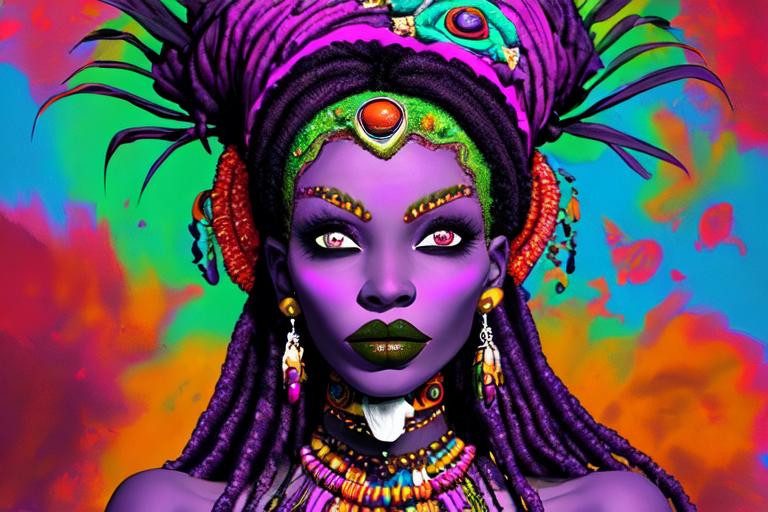
The origins of hoodoo can be traced back to the African diaspora, specifically the practices of West and Central African slaves brought to the Americas during the transatlantic slave trade. These enslaved Africans brought with them a rich spiritual tradition that combined elements of African religion, spirituality, and magic with the influences of Native American and European traditions.
The term “hoodoo” itself is believed to have originated from the African word “hudu,” meaning “power” or “spiritual force.” Over time, the practice of hoodoo evolved and adapted to the specific cultural and social contexts in which it was practiced, incorporating elements from various other spiritual traditions and belief systems.
One of the key features of hoodoo is its syncretic nature, meaning that it combines elements of different religions and spiritual practices to create a unique blend of beliefs and practices. For example, hoodoo incorporates elements of African religion and spirituality, Christianity, Native American traditions, and European folk magic.
Hoodoo practitioners often draw on the power of the natural world, using plants, animals, and other natural objects in their spells and rituals. They may also work with ancestors and spirits, calling on them for guidance, protection, and support. In many ways, hoodoo can be seen as a way of connecting with the spiritual and natural world to access hidden sources of power and wisdom.
During the era of slavery in the United States, many slaves turned to hoodoo as a means of resistance and survival. They used their knowledge of hoodoo to protect themselves from harm, to gain favor with their masters, and to communicate with other slaves. Hoodoo became an important tool for building community and resistance in the face of extreme oppression and violence.
After slavery was abolished, hoodoo continued to evolve and adapt to the changing social and cultural context of African American communities. It became a way of preserving cultural heritage and passing down traditions from one generation to the next.
In the 20th century, hoodoo became increasingly popular among African Americans living in urban areas. It was often practiced in secret, as many people were afraid of being ostracized or persecuted for their beliefs. However, in recent years, there has been a resurgence of interest in hoodoo among a wider audience, including people of all races and backgrounds.
Today, there are many different approaches to practicing hoodoo, and the practice continues to evolve and adapt to changing times and contexts. However, at its core, hoodoo remains a powerful and unique blend of African spirituality, folk magic, and natural wisdom that offers a rich and meaningful path to spiritual growth and empowerment.
Ritual Tools and Objects
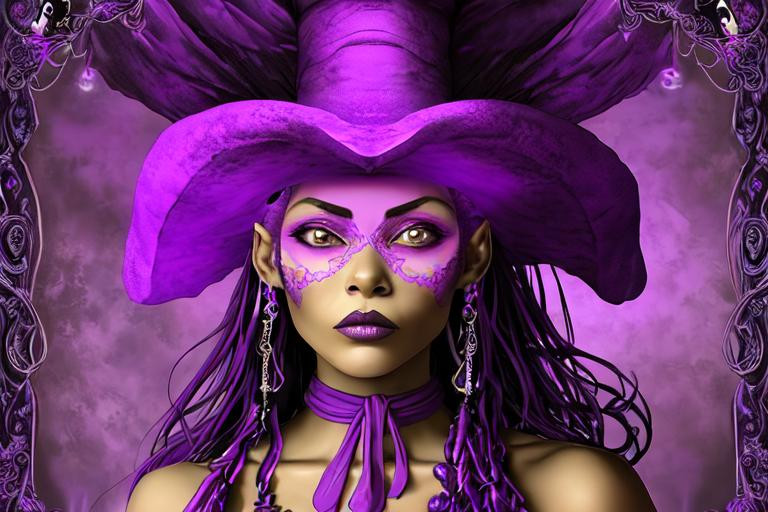
Hoodoo rituals often involve the use of various tools and objects, each of which holds a special significance and symbolic meaning. These tools and objects are used to help focus intention, direct energy, and create a sacred space for the ritual.
Candles are a common tool used in hoodoo rituals, and they are often used to represent different intentions or desires. For example, a red candle may be used in a love spell, while a green candle may be used in a money spell. The color and shape of the candle, as well as any inscriptions or symbols carved into it, can also carry additional meaning and symbolism.
Herbs are another important component of hoodoo rituals, as they are believed to possess powerful healing and magical properties. Different herbs are used for different purposes, and they may be used in a variety of ways, such as in teas, baths, oils, and powders. Some commonly used herbs in hoodoo include basil, cinnamon, mint, and sage.
Oils are also frequently used in hoodoo rituals, as they are believed to have strong magical properties and can be used to anoint candles, objects, or oneself. Each oil has its own unique properties and associations, and they may be blended together to create a specific effect or intention.
Mojo bags are small bags filled with herbs, stones, or other objects that are believed to possess magical properties. These bags are carried on the person or placed in a specific location, and they are believed to attract or repel certain energies or entities. Mojo bags may be created for a specific purpose, such as protection or prosperity, and they are often personalized to reflect the individual’s intentions and needs.
Other tools and objects commonly used in hoodoo rituals include amulets, talismans, and charms, which are believed to possess protective or magical properties. These objects may be worn or carried on the person, or they may be placed in a specific location to protect or bless a space.
The use of water is also an important component of many hoodoo rituals, as it is believed to possess powerful cleansing and healing properties. Water may be used in a variety of ways, such as in baths, sprays, or aspersions, and it may be combined with herbs, oils, or other objects to enhance its magical properties.
In addition to these physical tools and objects, the use of prayer, meditation, and visualization is also a key component of hoodoo rituals. These practices are used to focus the mind and cultivate a state of receptivity and openness to spiritual energies and guidance.
While the use of these tools and objects is an important part of hoodoo ritual, it is important to note that the true power of hoodoo lies not in the objects themselves, but in the intention and focus of the practitioner. The tools and objects are simply tools to help the practitioner connect with the natural and spiritual world and to focus their intentions and energies.
Spells and Rituals for Specific Purposes
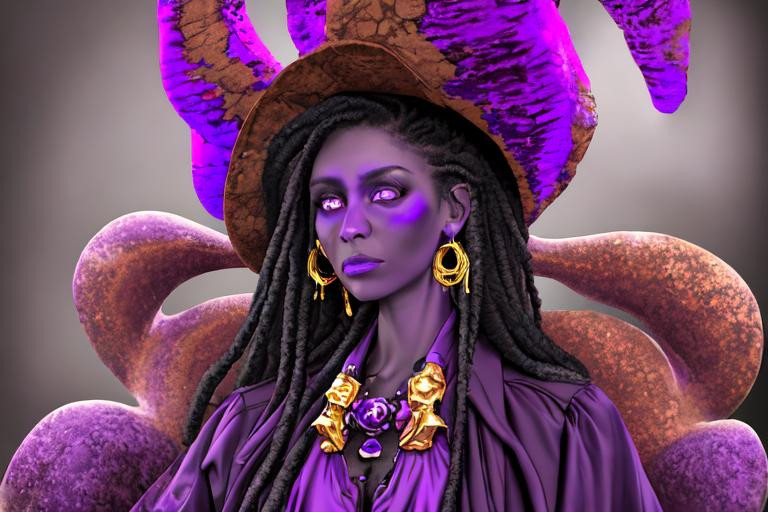
Hoodoo is a practice that is often associated with spell work and ritual. These spells and rituals can be used for a variety of purposes, including healing, protection, love, prosperity, and more. Here are some examples of spells and rituals for specific purposes in hoodoo:
Love Spells
One of the most popular types of spells in hoodoo are love spells. These spells are designed to help attract love and romance into one’s life, or to strengthen an existing relationship. Some popular love spells in hoodoo include using red candles, love oils, and herbs such as rose petals or jasmine.
Money Spells
Another common type of spell in hoodoo are money spells, which are designed to attract wealth and prosperity into one’s life. These spells may involve the use of green candles, money oils, and herbs such as cinnamon or bay leaves. Some practitioners may also create a mojo bag or talisman for attracting money and prosperity.
Protection Spells
Protection spells are used to ward off negative energies, entities, or people. These spells may involve the use of black candles, protective oils, and herbs such as rosemary or garlic. Some practitioners may also use amulets or talismans for protection, such as a protective charm necklace.
Healing Spells
Hoodoo also offers spells and rituals for healing, both physical and emotional. These spells may involve the use of blue candles, healing oils, and herbs such as lavender or chamomile. Some practitioners may also create a healing talisman or mojo bag for themselves or a loved one in need of healing.
Success Spells
Success spells are designed to help individuals achieve their goals and reach their desired level of success. These spells may involve the use of yellow candles, success oils, and herbs such as bay leaves or cinnamon. Some practitioners may also create a success talisman or mojo bag for themselves to carry as a reminder of their intentions.
Cleansing Spells
Cleansing spells are used to clear negative energies and entities from a space or person. These spells may involve the use of white candles, cleansing oils, and herbs such as sage or frankincense. Some practitioners may also use salt or other cleansing materials in their rituals.
Protection from Evil Spells
Another type of protection spell in hoodoo is protection from evil spells. These spells are designed to protect individuals from harm caused by evil or negative energies. These spells may involve the use of black candles, protective oils, and herbs such as rue or angelica.
Court Case Spells
Court case spells are used to help individuals win legal battles and court cases. These spells may involve the use of purple candles, court case oils, and herbs such as chamomile or calendula. Some practitioners may also create a court case talisman or mojo bag to carry with them to court.
Reversal Spells
Reversal spells are used to reverse negative energies or entities that may be affecting an individual. These spells may involve the use of black candles, reversal oils, and herbs such as cayenne pepper or salt. Some practitioners may also use mirrors in their reversal spells, reflecting the negative energies back to their source.
Blessing Spells
Blessing spells are used to bless a person, place, or object with positive energies and intentions. These spells may involve the use of white candles, blessing oils, and herbs such as frankincense or myrrh. Some practitioners may also use holy water or other blessed materials in their blessing rituals.
Hoodoo offers a variety of spells and rituals for specific purposes, including love, money, protection, healing, success, cleansing, court cases, reversal, and blessings. These spells and rituals can be adapted to fit the individual’s needs and intentions, and are often accompanied by the use of tools
Voodoo Dolls: How They Work and Their Purpose
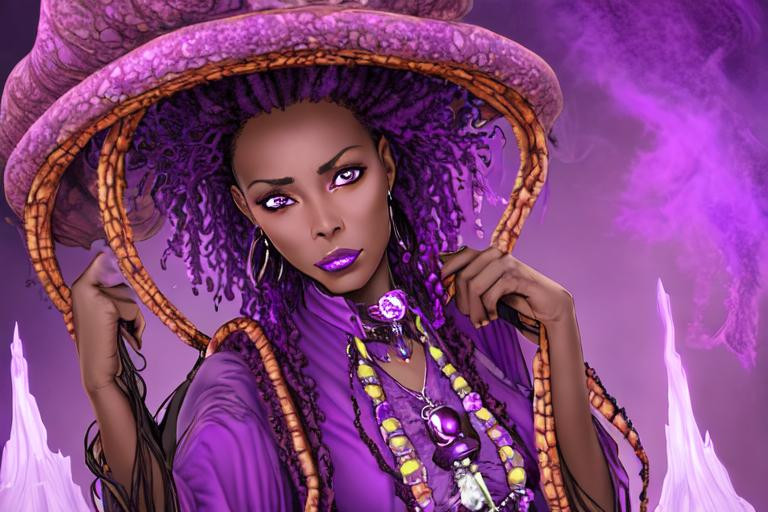
Voodoo dolls are perhaps one of the most misunderstood elements of the Voodoo religion. Many people associate them with black magic and evil intentions, but in reality, they can be used for both positive and negative purposes. In this article, we will explore the history and purpose of Voodoo dolls, as well as how they work.
History and Origins
The origins of Voodoo dolls are not entirely clear, but they are believed to have originated in West Africa and were brought to the Americas by slaves. In African religions, dolls were often used for healing and spiritual purposes, and it is believed that Voodoo dolls were adapted from these traditions.
In Voodoo, the doll represents the person it is meant to affect, and it is believed that by manipulating the doll, the practitioner can manipulate the person as well. The dolls are often made from cloth, wood, or clay, and are typically personalized with items such as hair, clothing, or personal belongings of the intended target.
How They Work
The concept of Voodoo dolls is based on sympathetic magic, which is the idea that an object can be used to represent a person or object, and any action taken upon that object will affect the real person or object. In the case of Voodoo dolls, the doll is used to represent a person, and any actions taken upon the doll will affect the real person as well.
Voodoo dolls are typically used in spells or rituals for a variety of purposes, such as healing, love, or revenge. The practitioner will often focus their energy and intentions onto the doll, using pins or other objects to affect the corresponding area on the person. For example, if the practitioner wants to cause harm to a person’s heart, they may stick pins into the heart area of the doll.
The purpose of the Voodoo doll can vary depending on the practitioner’s intentions. Some may use them for healing or protection, while others may use them for more negative purposes such as revenge or control. It is important to note that not all practitioners of Voodoo use Voodoo dolls, and some may not condone their use for negative purposes.
Misconceptions and Ethics
One of the most common misconceptions about Voodoo dolls is that they are used to cause harm or death to the intended target. While it is true that some practitioners may use them for negative purposes, the majority of practitioners use them for healing or protection.
Additionally, it is important to note that Voodoo is a religion with its own set of ethics and moral guidelines. The use of Voodoo dolls for negative purposes goes against these guidelines, and many practitioners would not condone such actions.
It is also important to note that Voodoo dolls are not a replacement for seeking professional help or medical attention. While they may be used for spiritual purposes, they should not be used as a substitute for medical or psychological treatment.
Voodoo dolls are a misunderstood aspect of the Voodoo religion. They can be used for both positive and negative purposes, and are based on the concept of sympathetic magic. While they are not a replacement for professional help or medical attention, they can be a useful tool in certain spiritual practices. It is important to understand the history and purpose of Voodoo dolls, as well as the ethical considerations that come with their use.
How to Make a Voodoo Doll: A Step-by-Step Guide
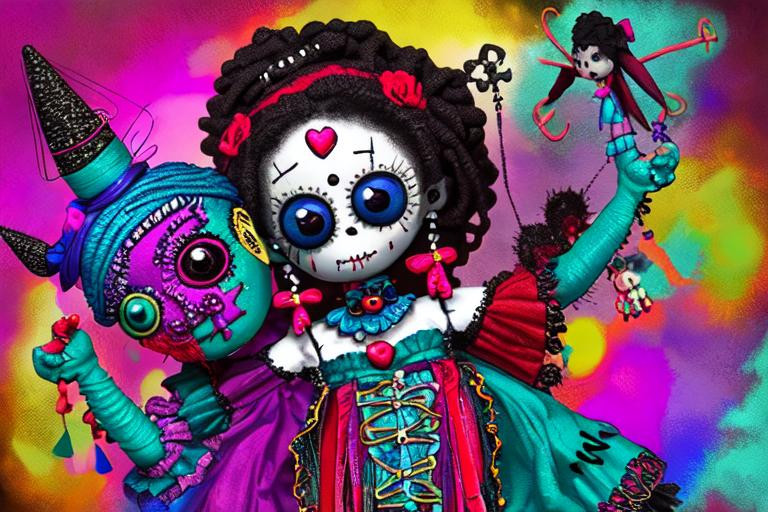
Making a Voodoo doll can be a powerful spiritual practice that allows you to connect with your intentions and desires. While it may seem intimidating at first, it is actually a simple process that anyone can do. In this article, we will walk you through the steps of making a Voodoo doll.
Materials Needed
To make a Voodoo doll, you will need a few basic materials:
- Fabric or cloth (preferably in a color that represents your intention)
- Scissors
- Needle and thread
- Stuffing (such as cotton or herbs)
- Personal items (such as hair, clothing, or jewelry) to personalize the doll
Step 1: Choose Your Intention
The first step in making a Voodoo doll is to choose your intention. What do you want the doll to represent? This can be a person, an emotion, or a situation. It is important to choose an intention that is clear and specific.
Step 2: Choose Your Fabric
Choose a fabric or cloth that represents your intention. For example, if you are making a Voodoo doll for love, you may choose a pink or red fabric. If you are making a Voodoo doll for protection, you may choose a white or black fabric.
Step 3: Cut the Fabric
Cut two pieces of fabric in the shape of the doll you want to create. Make sure the two pieces are the same size and shape.
Step 4: Sew the Doll
Sew the two pieces of fabric together, leaving a small opening at the top. This will be where you stuff the doll.
Step 5: Stuff the Doll
Stuff the doll with cotton or herbs, making sure to leave enough room to add personal items. As you stuff the doll, focus your intentions on your desired outcome.
Step 6: Add Personal Items
Add personal items such as hair, clothing, or jewelry to personalize the doll. These items should belong to the person or situation you want to represent.
Step 7: Close the Doll
Sew the opening closed, making sure to secure the stuffing and personal items inside.
Step 8: Decorate the Doll
Decorate the doll with additional fabric, beads, or other items that represent your intention. For example, if you are making a love doll, you may add a heart or a symbol of love.
Step 9: Consecrate the Doll
Consecrate the doll by holding it in your hands and focusing your intentions on it. You may also choose to bless or anoint the doll with oil or water.
Step 10: Use the Doll
Once your Voodoo doll is complete, you can use it in your spiritual practice. Some practitioners may use the doll in spells or rituals, while others may simply keep it as a reminder of their intention.
It is important to remember that Voodoo dolls should be used with care and respect. They should not be used to harm or manipulate others, and should always be used with good intentions. Additionally, Voodoo dolls should never be used as a replacement for medical or professional help.
Making a Voodoo doll can be a powerful spiritual practice that allows you to connect with your intentions and desires. By following these simple steps, you can create a personalized Voodoo doll that represents your desired outcome. Remember to always use the doll with care and respect, and to focus your intentions on positive outcomes.
Final Musings
Hoodoo is a powerful and ancient practice that has been passed down through generations. It is a practice rooted in African American history and culture, and it is a testament to the resilience and strength of the people who have kept it alive.
As witches, we have the opportunity to connect with the wisdom and knowledge of our ancestors through Hoodoo. By working with the spirits and energies of the natural world, we can tap into the power of this ancient tradition and use it to create positive change in our lives and the lives of others.
But with great power comes great responsibility. As practitioners of Hoodoo, it is important to approach the practice with respect and humility, and to use it only for good. We must remember that Hoodoo is a sacred practice that should never be taken lightly.
In the end, Hoodoo is not just about spells and rituals. It is about connecting with the world around us, with our ancestors, and with the divine. It is about tapping into our own inner power and using it to make a positive difference in the world. So let us approach this ancient tradition with reverence and awe, and use it to bring light, love, and healing to ourselves and those around us.




